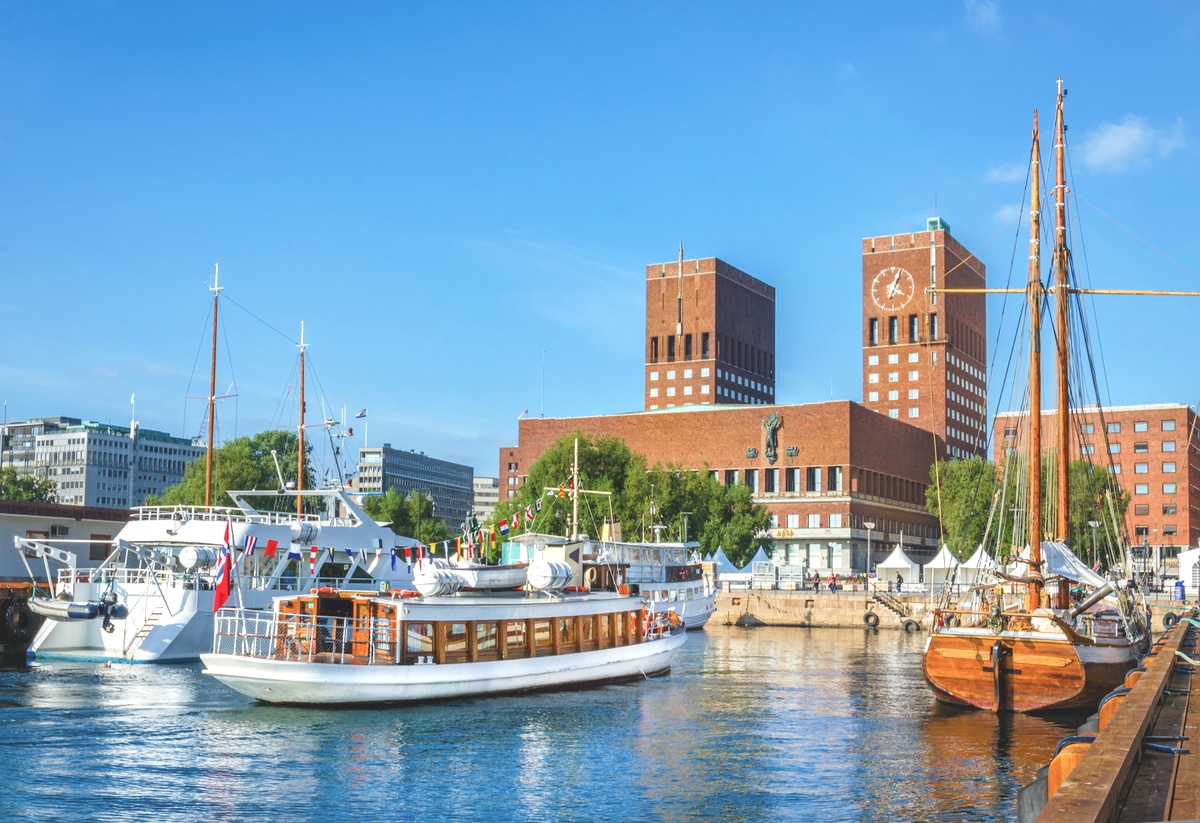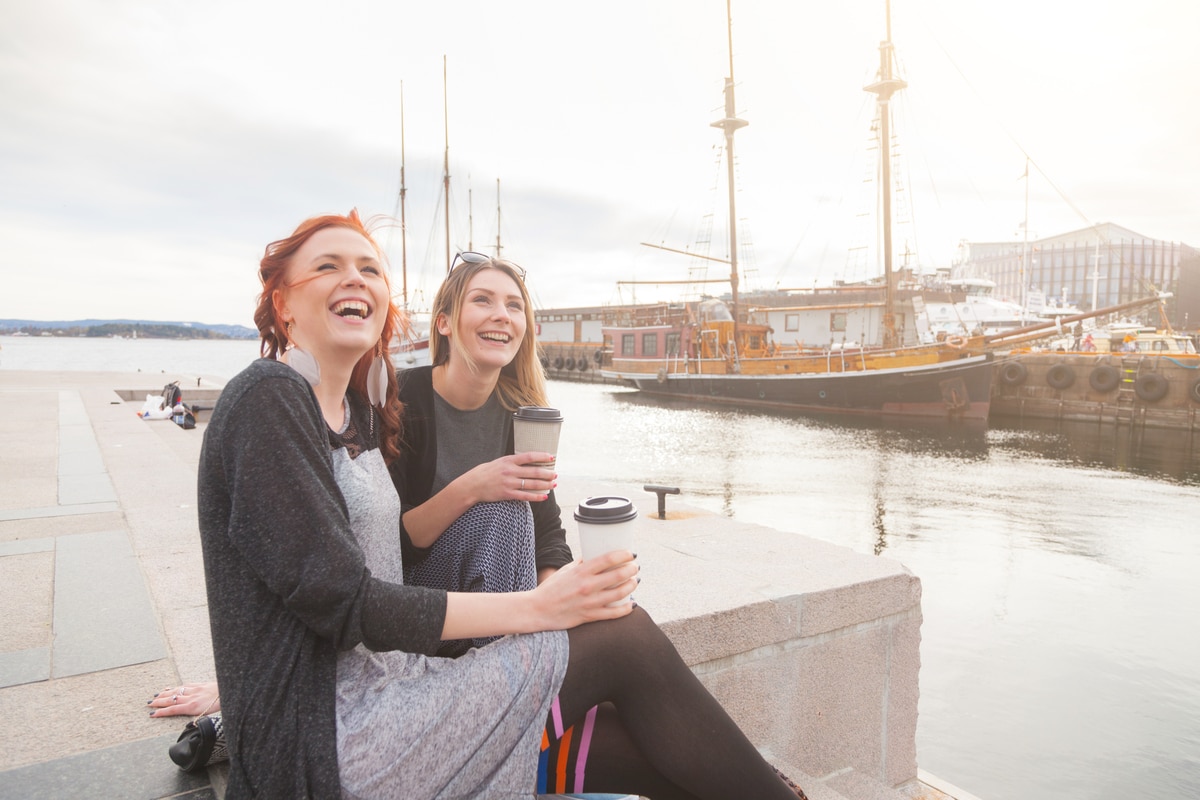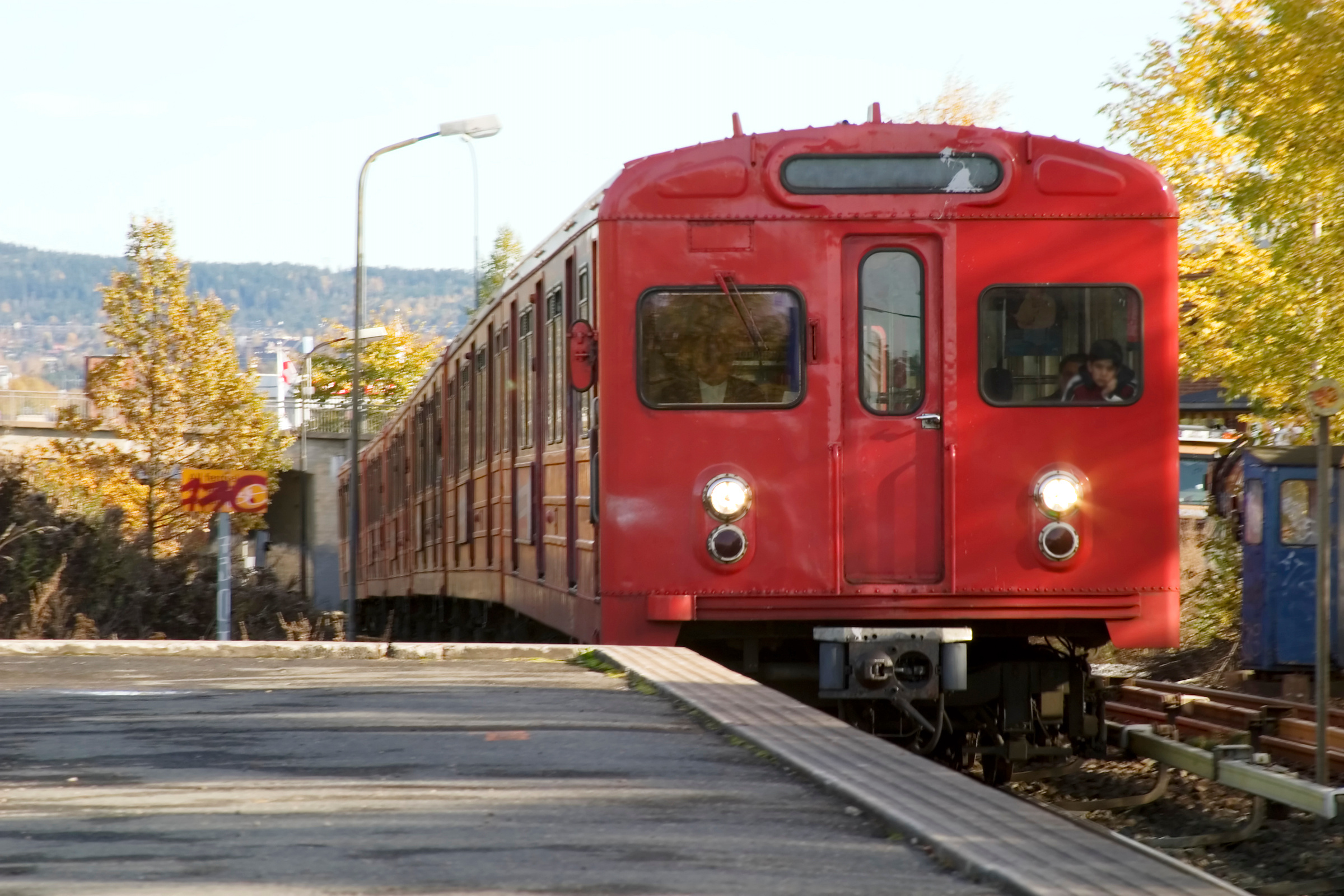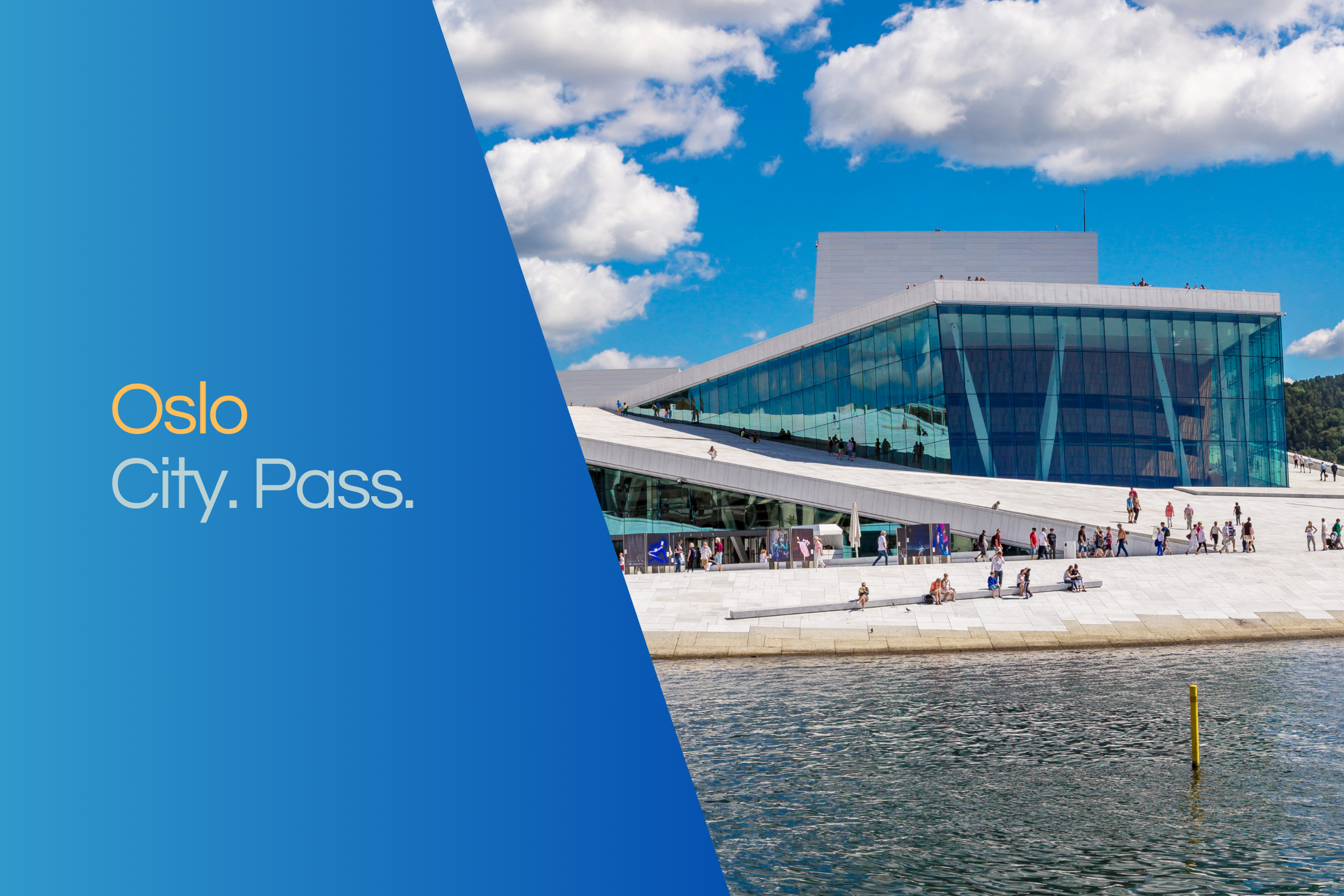Parliament in Oslo
One of the most important buildings in Oslo is the stately Stortinget Parliament House of Norway, located on Oslo's grand boulevard Karl Johans gate 22, which leads up to the Royal Palace. From the windows of the rotunda, the view extends directly to the Royal Palace and the National Theatre.
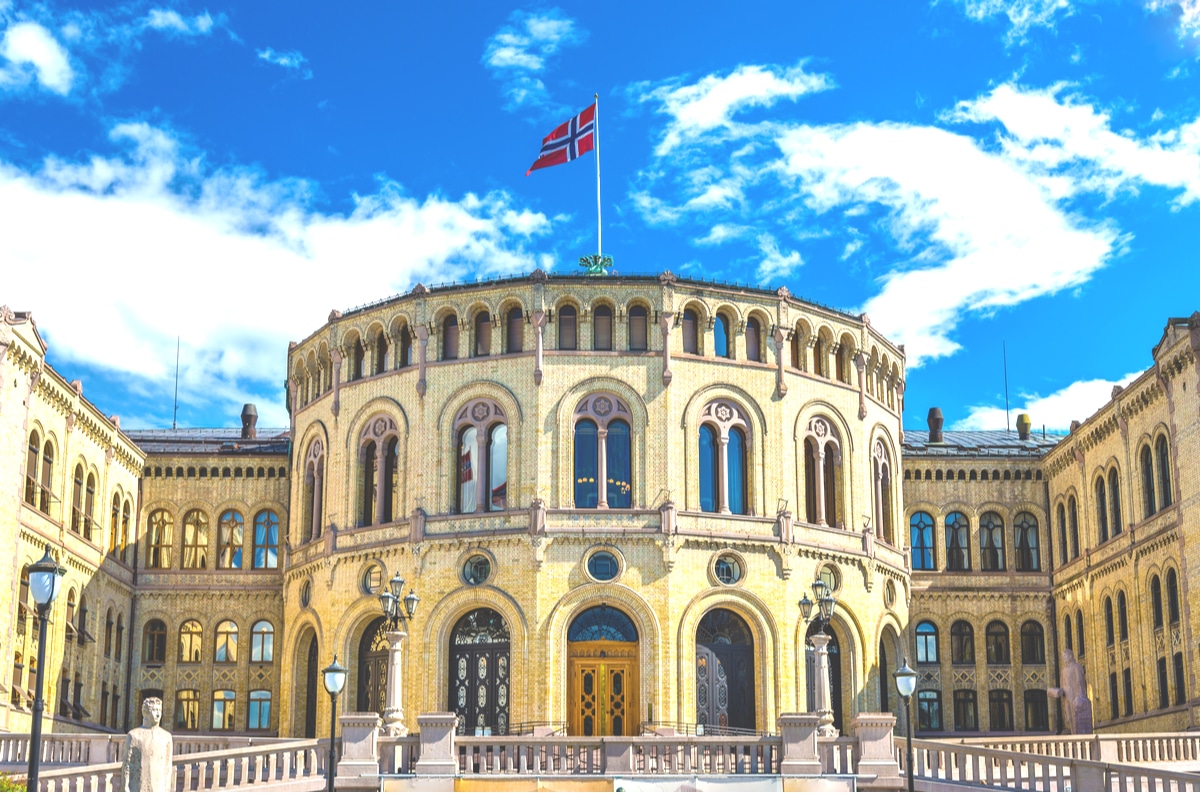
History and architecture
Under the direction of the Swedish architect Emil Victor Lenglet, the Oslo Parliament building was erected in 1866. The building's most distinctive features are its two wings and its projecting central rotunda and its brilliant yellow sandstone colour. The highly symmetrical arrangement of the building's components in curves and right-angled forms gives the façade an extremely stylish appearance. The ensemble, which is harmonious in every respect, is dominated by the imposing Romanesque arch structures, pillars and columns, as well as by a successful combination of other Romanesque and northern European style elements. At the same time, the building, which was erected in the architectural style of the style-embracing Historicism, is intensively influenced by further architectural aspects of the Neo-Gothic, Neo-Renaissance and Neo-Baroque styles.
On both sides of the central rotunda are impressive neoclassical wings, whose architecture is undoubtedly influenced by northern Italian and especially Venetian stylistic features.
In 1959, the extension of the Parliament building was completed. The attached four-storey functional building was built entirely according to the design principles of functionalism in the course of simple and functional modernization.
Inside the parliament building
The semi-circular entrance hall impresses with its charming high arched windows that spread their interesting light in the vestibule before reflecting it on the gleaming granite floor. The interior dome and walls are decorated with geometric shapes as well as simple floral and foliate motifs. The architecturally masterful stair hall with symmetrical sweeping staircase finds echoes of medieval court designs. Halfway up, there is an impressive memorial to fallen soldiers and peacemakers.
The central element in the interior of the building is the famous Parliament Hall, also known as the "Historic Hall". Here, in the "Stortingssal", directly above the royal throne, is also the important painting "Eidsvold 1814" by the Norwegian painter Oscar Arnold Wergeland, which depicts the historic moment of the first constituent National Assembly. In a particularly representative manner, the Parliament Hall is redecorated as the Throne Hall every year at the beginning of October, when the King presides over the opening session of Parliament.
Other important rooms in the Oslo Parliament building are the "Eidsvoll Gallery" and the semi-circular "Lagting Hall". The impressive "Historic Hall", which resembles a medieval archway with its massive columns and vaulted ceiling structures, is nowadays the venue for numerous social events and art exhibitions.
Further highlights and guided tours
Directly in front of the Parliament, on either side of the entrance area, are two oversized, fabulously designed granite lions, to which the Parliament also owes the name "Lion's Hill". Directly in front of the Parliament building is the much-visited "Eidsvollpark", a picturesque green area that forms a charming setting for the unique Storting at any time of the year. Oslo's magnificent parliament building can be visited during an official, free guided tour in spring, summer and autumn.
